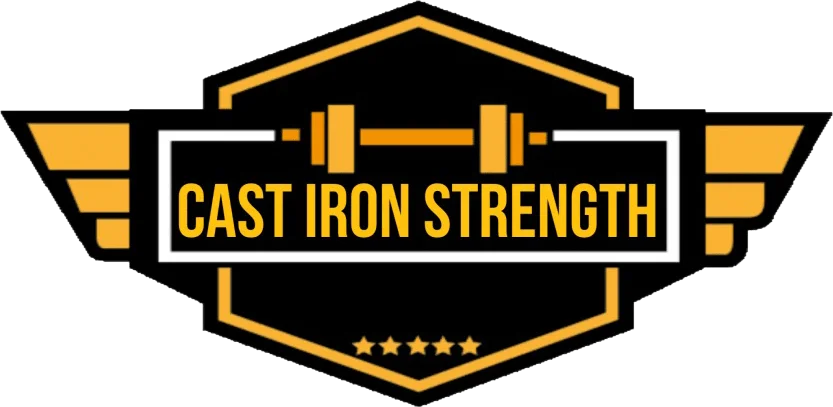TL;DR
- Chain deadlift is lighter at the bottom and heavier at the top and heavier loads lead to greater muscle activation… thanks science.
- The trap bar high be better for athletes as it shows better force characteristics and the straight bar deadlift is better for training the posterior chain.
- If you train for sports performance in a ground based sport you definitely should be squatting instead of leg pressing.
- Sled sprints utalising 75% of bodyweight potentiate bodyweight springs after 8-12 minutes of rest.
- Resistance training exercise causes increased calorie expenditure, heart rate and lactate increases regardless of implement. Resistance training could also be potentially used to induce cardiovascular adaptations.
EMG and Force Plate Analysis of the Deadlift Performed With and Without Chains
Ramsey Mijem et al looked at the effect of adding chains to a deadlift exercise on muscle activation (EMG) and force characteristics versus the traditional deadlift exercise. 13 resistance trained men took pair in the study on Day one of the test they performed a 1 rep max test. On day 2 they performed two sets of 3 reps of 85% of their maximum one with chains and the other without chains. The 85% of max in the chain condition had approximately 20% of it’s load coming from chain resistance.
There weren’t many differences reported the no chain condition resulted in greater glute activation, the chain deadlift resulted in less ground reaction forces and didn’t affect rate of force production. And for both variations erector spinie activation was greater at the bottom of the lift when compared with the top of the lift.
TL;DR – Chain deadlift is lighter at the bottom and heavier at the top and heavier loads lead to greater muscle activation… thanks science.
Muscle activation and power characteristics of trap bar deadlift vs straight bar deadlift
Kevin Camara looked at the effect of the trap bar deadlift vs the straight bar deadlift utilising EMG and a force plate to look at muscle activation and force characteristics of both lifts. 20 men took part in the deadlift they performed 1RM deadlift testing on both variations and showed little difference between the two types of bar straight bar 181.4 trap bar 181.1 on average.
Subjects then performed a set of 3 on a force plate using 65 and 85% of 1 RM. The EMG showed that the quadriceps where activated more in the trap bar sets whilst the lower back and hamstrings where more active during the straight bar deadlift. The trapper showed greater levels of peak force, peak power and peak velocity compared to the straight bar deadlift.
TL;DR – the trap bar high be better for athletes as it shows better force characteristics and the straight bar deadlift is better for training the posterior chain.
The Impact of Back Squat and Leg-Press Exercises on Maximal Strength and Speed-Strength Parameters
Klaus Wirth et al looked at the effects of the back squat exercise and leg press on both the countermovement jump and squat jump. 78 students took part in the study and where split into two groups Leg press and Squat groups. Before the intervention they took part in pre testing and then took part in an 8 week training programme utilising either the back squat or leg press.
Post testing showed greater performance gains in both jump tests for the squat jump 12.4% vs 3.5% and for the counter movement jump 12% vs 0.5%.
TL;DR – if you train for sports performance in a ground based sport you definitely should be squatting instead of leg pressing.
The Acute Potentiating Effects of Heavy Sled Pulls on Sprint Performance
Paul Winwood et al looked at the effects of a 75% bodyweight 15 meter spring and 150% bodyweight sprint over 7.5 meter on subsequent 15 meter body weight sprint performance. 22 resistance trained rugby athletes took part in the study they performed 2 bodyweight sprints the performed one of the two weighted sprint conditions. After 2 sled pulls they performed another 15 meter sprint at three time intervals 4 minutes, 8 minutes and 12 minutes after the last sled effort.
Only 75% of bodyweight showed an increase in sprint performance and the best increases of sprint performance came at 8-12 minutes post sled sprint.
TL;DR – sled sprints utalising 75% of bodyweight potentiate bodyweight springs after 8-12 minutes of rest.
Acute Physiological Responses to Strongman Training Compared to Traditional Strength Training
Nigel Harris looked at the pre and post levels of blood lactate and salivary testosterone levels of both strongman and traditional strength training sessions both lasting approximately 80 minutes in length. During the session heart rate, calorie expenditure and substrate utilisation where measured. 10 healthy men took part in the study and had 7 days of rest between sessions.
The strongman training consisted of sled dead, farmers walk, 1 arm DB clean and press and tyre flip utilising 30 second bouts of maximal effort. For the weight training they worked up to 75% of 1 RM using the squat, deadlift, power clean and bench press exercise. Both training sessions showed elevations in all measured parameters apart from testosterone. Both methods produced similar responses.
TL;DR – resistance training exercise causes increased calorie expenditure, heart rate and lactate increases regardless of implement. Resistance training could also be potentially used to induce cardiovascular adaptations.

















